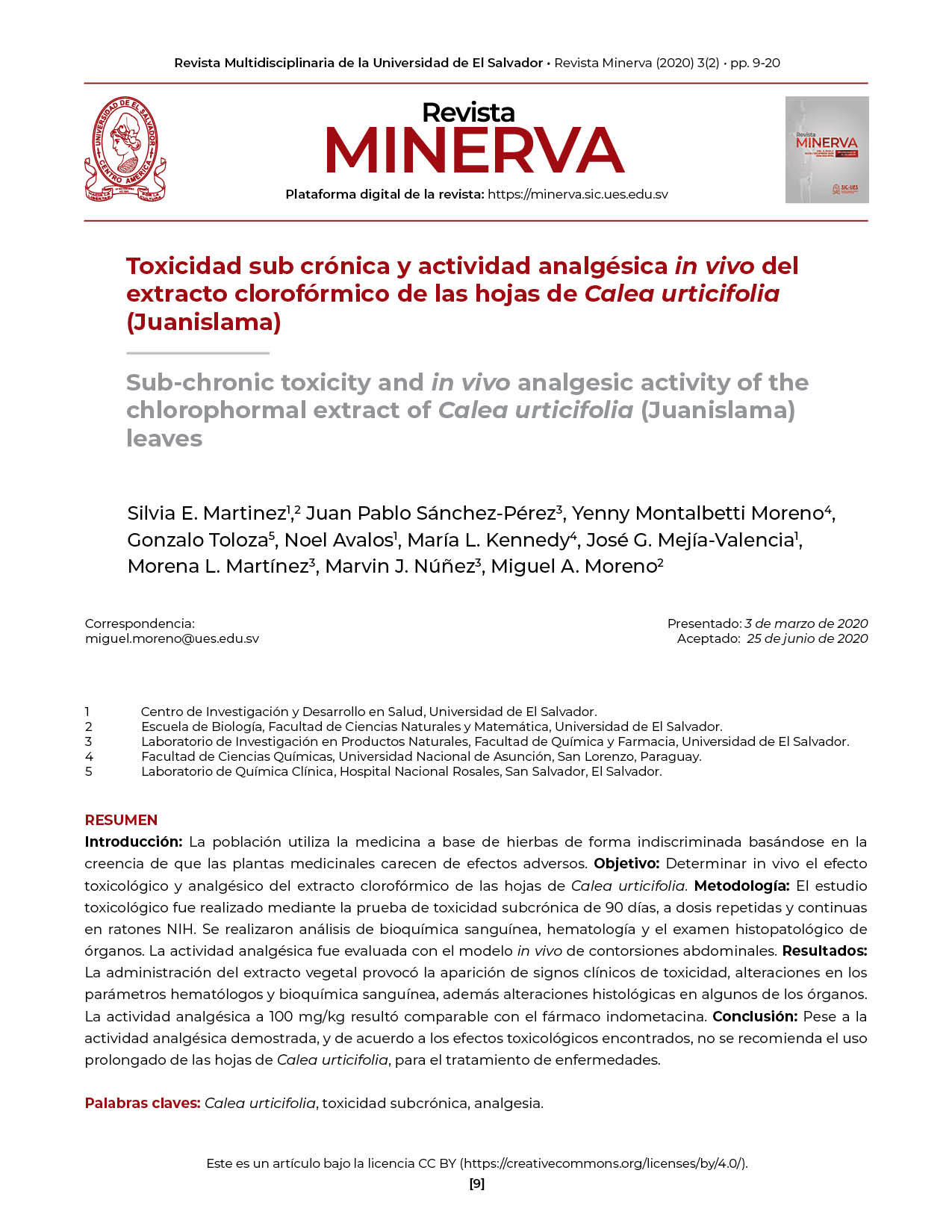Abstract
Introduction: The population uses medicinal plants indiscriminately to treat diseases, with the believe that they are safe and lack adverse effects. Objective: To determine the in vivo toxicological and analgesic effect of the chloroform extract of Calea urticifolia leaves Methodology: The toxicological study was performed using a 90-day sub-chronic toxicity test in NIH mice, at repeated and continuous doses. Blood biochemistry, hematology and histopathological examination of organs were performed. The analgesic activity was evaluated in vivo using a model of abdominal contortions. Results: The administration of the plant extract caused the appearance of clinical signs of toxicity, alterations in hematic parameters and blood biochemistry, as well as histological alterations in some of organs. The analgesic activity at 100 mg/kg was similar to the Indomethacin drug. Conclusion: Despite the proven analgesic activity, according to the observed toxicological effects in this study, the prolonged use of Calea urticifolia leaves is not recommended for the treatment of diseases.

This work is licensed under a Creative Commons Attribution 4.0 International License.
Copyright (c) 2020 Authors who publish in Revista Minerva agree to the following terms: Authors continue as owners of their work, assigning only dissemination rights to Minerva Magazine under the standards of the Creative Commons Attribution 4.0 International License (CC BY 4.0). This license allows others to mix, adapt and build upon the work for any purpose, including commercially, and although new works must also acknowledge the initial author, they do not have to license derivative works under the same terms.





